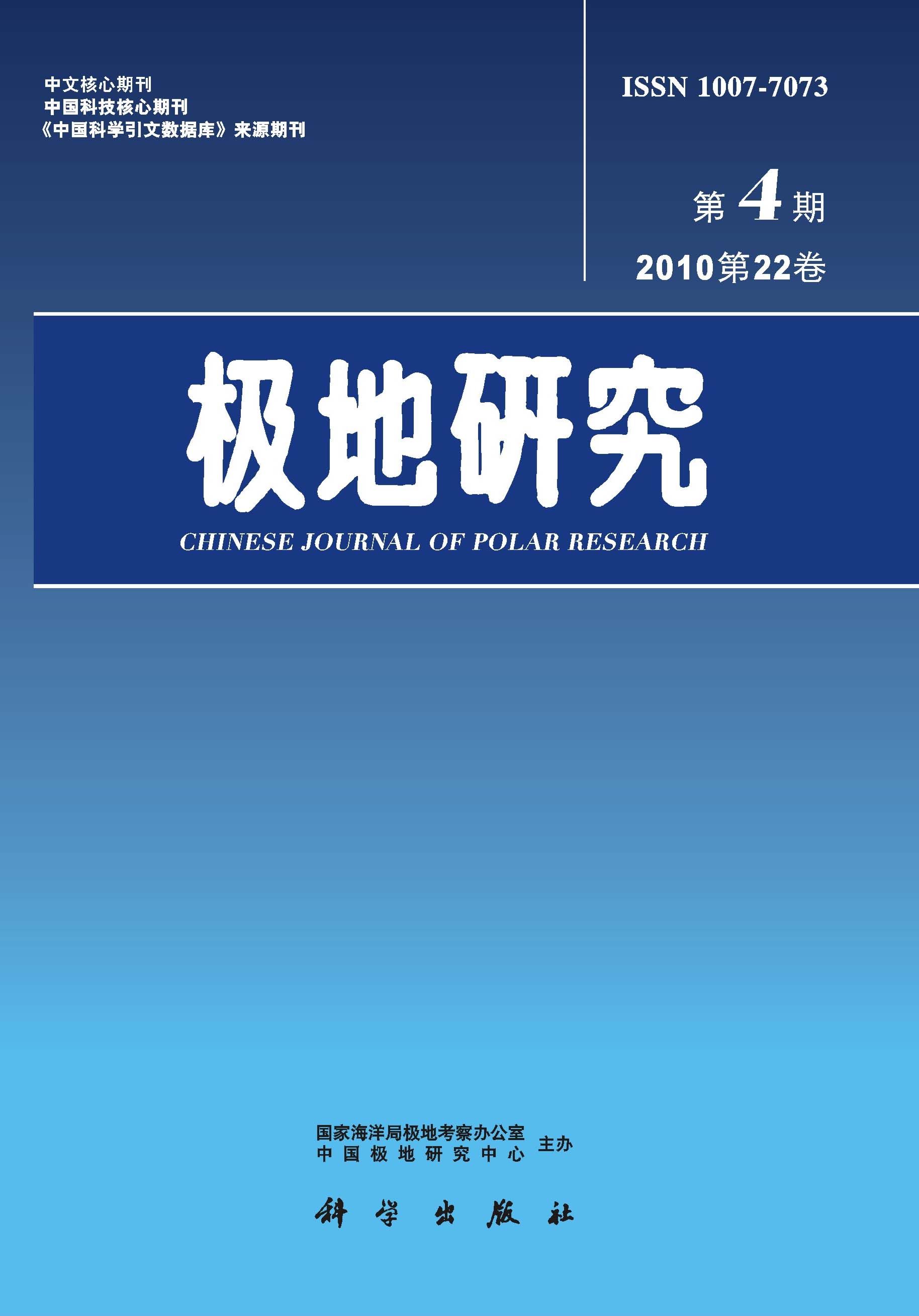Glacial marine sedimentary features of Bransfield Strait since late Pleistocene were inferred based upon variation in lithology,mineral composition,microbiological thanatocoenoses and other geological proxies in a piston core PC10(57°29.902′W,62°17.083′S,water depth 2000m).The sediments throughout the core(753.5cm) were dominated by fine grained clastics with particle diameter less than 0.063mm,including essentially siliceous ooze and siliceous muddy silt.Material components of the sediment in the core were composed of microbiologic remains,clay minerals,volcanic products and materals of terrigenous origin.The first one of the former was almost all the siliceous organism,mostly diatom tests and uncommonly silicoflagellate,sponge spicula and etc.Among the clay minerals,montmorillonite occuresd abundantly,its content was always more than 40%.The terrigenous components included heavy minerals,primarily unsteady association such as olivine,pyroxene and hornblende,light minerals dominated by felspars and debrics chiefly basic volcanics.According to the sedimentogenesis,sediments of whole prism could be classified as three major types: 1)Biosiliceous sediment.Consisting of siliceous biologic remains and clay minerals,chiefest content of all is diatom tests ranging from 35%-75% of total sediments,whereas the detrital content was lower(about 8%-19%). 2)Volcanic detritus.Derivating directly from submarine and subaerial eruption,chief among the detritus was silt to coarse grade volcanics which occupied the content of more than 50%. 3)Turbidity sediment.Growing debrics and developing graded bedding,fractions of this sedimentary type coarsen obviously.The mineral and biologic assemblages,within the bed are distinquished from underlying and overlying sediments,with dissolution and secondary silica deposits on quartz surfaces. The age of the bottom of the studied sequences,obtained by both results of uranium series and thermoluminescent dating,may be considered as about 115.0 ka.Based on the data above,the sedimentary characteritics of present area under the glacial marine environment since Late Pleistocene can be briefly summarized as follow: 1)To have diversified material supplies. 2)To be biogenic silica deposit predominant among the sedimentation. 3)To demonstrate higher sedimentation rate. 4)To be alternating influnce of lowstand water/glacial stage and highstand water/interglacial stage goverring the region sedimentation.

